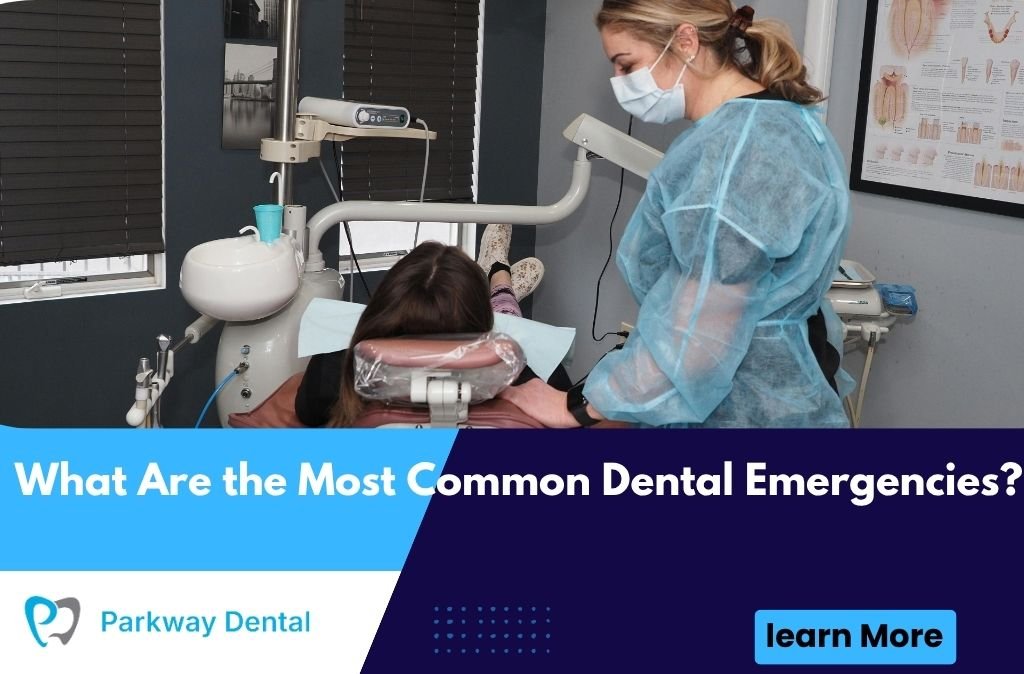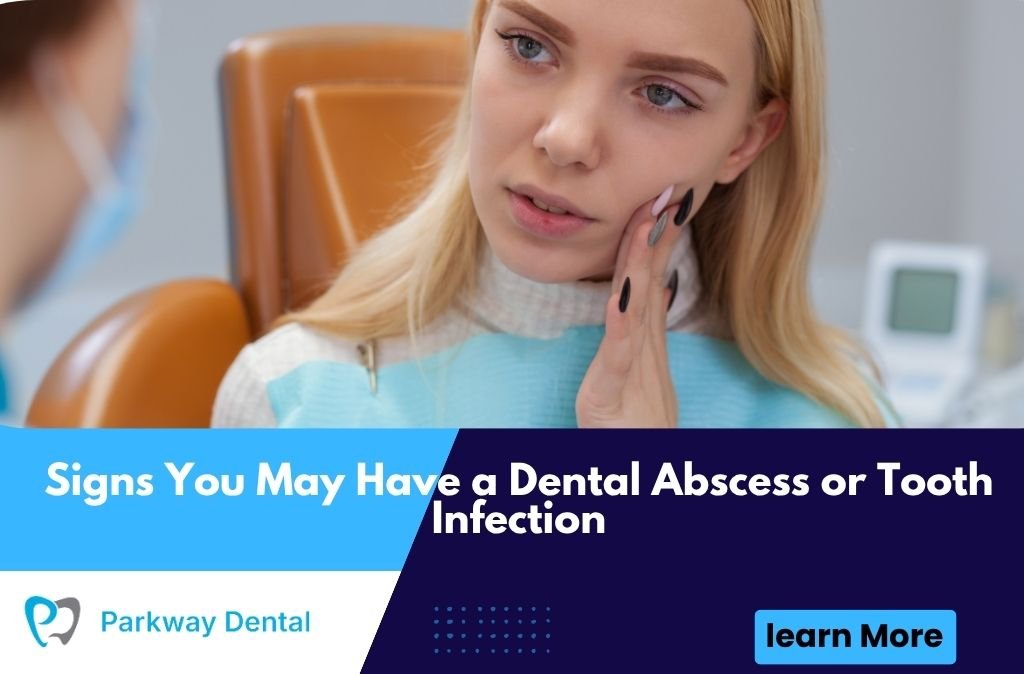Dental emergencies can strike unexpectedly, causing intense pain, discomfort, and potential long-term damage to your oral health. Understanding the most common dental emergencies is crucial for prompt action, as delays can lead to complications like tooth loss, infections, or worsened dental problems. From severe toothache to knocked-out tooth, these issues often require immediate emergency dental care to preserve your natural teeth and prevent further issues. In this comprehensive guide, we’ll explore the types of dental emergencies, their causes, symptoms, and how to handle them effectively. Whether you’re dealing with dental trauma or gum infections, knowing what to do can make all the difference in maintaining a healthy smile. This article will help you recognize oral health emergencies and seek timely dental treatment to avoid escalation.
Table of Contents
What Are Dental Emergencies and Why Do They Happen?
Dental emergencies refer to sudden oral health issues that require immediate attention to alleviate pain, stop bleeding, or prevent permanent damage. These situations can arise from various causes, including accidents, poor oral hygiene, or underlying dental conditions. Recognizing a dental emergency early can help you avoid complications like tooth loss or systemic infections.
Causes of Common Dental Emergencies
Many dental emergencies stem from preventable factors such as neglected tooth decay, which can lead to severe toothache or dental abscess. Dental trauma from sports injuries or accidents often results in a knocked-out tooth or broken tooth. Poor oral hygiene contributes to gum disease, causing bleeding gums or soft tissue injuries. Other triggers include biting hard foods, leading to lost filling or cracked tooth, or untreated cavities escalating into oral infections. Understanding these causes emphasizes the importance of regular dental checkups and good oral care to minimize risks.
Signs You’re Facing a Dental Emergency
Key indicators of a dental emergency include persistent severe pain, uncontrolled bleeding, swelling in the face or gums, or a dislodged tooth. If you experience a bad taste in your mouth, fever, or difficulty breathing/swallowing, seek emergency dental care immediately. These symptoms signal potential oral health emergencies like dental abscess or gum infections, which can spread if untreated. Always contact a dentist if unsure, as early intervention can prevent dental complications.
The Most Common Dental Emergencies and Their Symptoms
Among the most common dental emergencies, certain issues occur frequently, affecting millions annually. These include toothache emergencies, dental trauma, and oral infections. Knowing the symptoms helps you identify when to seek emergency dental treatment.
Severe Toothache as a Top Dental Emergency
A severe toothache is one of the most common dental emergencies, often caused by tooth decay, cracked tooth, or dental abscess. Symptoms include throbbing pain, tooth sensitivity to hot/cold, and swelling around the tooth. This oral health emergency can disrupt daily life, making eating or sleeping difficult. If accompanied by fever or bad breath, it may indicate an infection, requiring prompt dental treatment to avoid spreading.
Knocked-Out Tooth from Dental Trauma
A knocked-out tooth, or avulsed tooth, is a critical dental emergency typically resulting from accidents or sports injuries. Symptoms include immediate bleeding, pain, and an empty socket. This oral emergency demands quick action, as the tooth can often be saved if reimplanted within 30-60 minutes. Without treatment, it leads to tooth loss and potential jawbone deterioration.
Broken Tooth or Cracked Tooth Emergencies
A broken tooth or cracked tooth is among the common dental emergencies, caused by biting hard foods, trauma, or weakened teeth from decay. Symptoms range from mild discomfort to sharp pain, tooth sensitivity, or visible damage. If the crack exposes the pulp, it can lead to infection. Seeking emergency dental care prevents further breakage and preserves the natural tooth.
Dental Abscess as a Serious Oral Infection
A dental abscess is a pus-filled infection in the tooth or gums, one of the most common dental emergencies linked to untreated cavities or gum disease. Symptoms include intense pain, swelling, fever, and a pimple-like bump on the gums. This oral health emergency can spread to other areas, causing systemic issues if ignored, making immediate dental treatment essential.
Lost Filling or Lost Crown Emergencies
A lost filling or lost crown exposes the tooth to bacteria, leading to pain or sensitivity. Common in worn dental restorations, symptoms include discomfort when eating or a rough tooth surface. This dental emergency risks infection or further damage, requiring quick emergency dental repair to protect the tooth.
Bleeding Gums and Soft Tissue Injuries in the Mouth
Bleeding gums or soft tissue injuries, such as cuts from sharp foods or accidents, are frequent dental emergencies. Symptoms include persistent bleeding, swelling, or pain. Often linked to gum disease or trauma, untreated cases can lead to infections. Proper oral care and emergency dental attention prevent escalation.
How to Handle Common Dental Emergencies at Home
While professional dental care is vital, initial steps at home can mitigate damage in dental emergencies. Always follow up with a dentist for proper treatment.
First Aid for Severe Toothache
For a severe toothache, rinse with warm saltwater to reduce inflammation and remove debris. Apply a cold compress to ease swelling and take over-the-counter pain relievers. Avoid placing aspirin on the gums to prevent burns. This provides temporary relief until emergency dental care.
Managing a Knocked-Out Tooth
If a tooth is knocked out, hold it by the crown, rinse gently, and try reinserting it. If not possible, store in milk or saliva. Seek emergency dental treatment within an hour to maximize saving the tooth.
Steps for a Broken Tooth or Cracked Tooth
Rinse with warm water for a broken tooth, apply a cold compress for swelling, and save fragments. Use dental cement temporarily if available. Visit a dentist promptly to avoid infection.
Treating a Dental Abscess Emergency
For a dental abscess, rinse with saltwater and take pain relievers. Avoid popping the abscess. Immediate dental treatment is needed to drain the infection and prevent spread.
Handling Lost Filling or Lost Crown
For a lost filling, use sugar-free gum or dental cement as a temporary cover. If a crown is lost, try reattaching with denture adhesive. See a dentist soon for permanent repair.
Care for Bleeding Gums and Soft Tissue Injuries
Apply pressure with gauze for bleeding gums or injuries. Use a cold compress for swelling. If bleeding persists, seek emergency dental care to rule out gum disease.
Preventing the Most Common Dental Emergencies
Prevention is key to avoiding dental emergencies. Good habits reduce risks of tooth decay, dental trauma, and oral infections.
Maintaining Excellent Oral Hygiene
Brush twice daily, floss, and use mouthwash to prevent plaque buildup and gum disease. Regular dental checkups catch issues early, avoiding emergencies like dental abscess.
Protecting Against Dental Trauma
Wear a mouthguard during sports to prevent knocked-out tooth or broken tooth. Avoid chewing hard objects to minimize cracked tooth risks.
Addressing Dental Problems Early
Treat cavities or gum issues promptly to prevent escalation into severe toothache or lost filling. Regular dental visits ensure timely intervention.
When to Seek Emergency Dental Care
If symptoms like severe pain, swelling, or bleeding persist, contact a dentist immediately. Emergency dental services are available for urgent oral health emergencies.
Finding a Dentist for Dental Emergencies
Look for emergency dental clinics with 24/7 services. In West Roxbury, MA, many offer prompt care for common dental emergencies.
Conclusion
The most common dental emergencies, including severe toothache, knocked-out tooth, broken tooth, dental abscess, lost filling, and bleeding gums, can be managed with quick action and professional dental care. Recognizing symptoms and knowing first aid steps prevent complications like tooth loss or infections. Prevention through oral hygiene and dental checkups is essential. For expert handling of dental emergencies in West Roxbury, MA, consult a trusted Dentist in West Roxbury, MA.
FAQs
What is the most common dental emergency?
A severe toothache is among the most common dental emergencies, often due to tooth decay or infection.
How do I handle a knocked-out tooth?
Rinse and reinsert the tooth if possible, or store in milk, and seek emergency dental care within an hour.
What causes a dental abscess?
A dental abscess results from untreated tooth decay or gum disease, leading to infection.
Is a lost filling a dental emergency?
Yes, a lost filling can expose the tooth to infection, requiring prompt dental treatment.
How can I prevent dental emergencies?
Maintain oral hygiene, wear mouthguards, and schedule regular dental checkups to avoid common dental emergencies.





